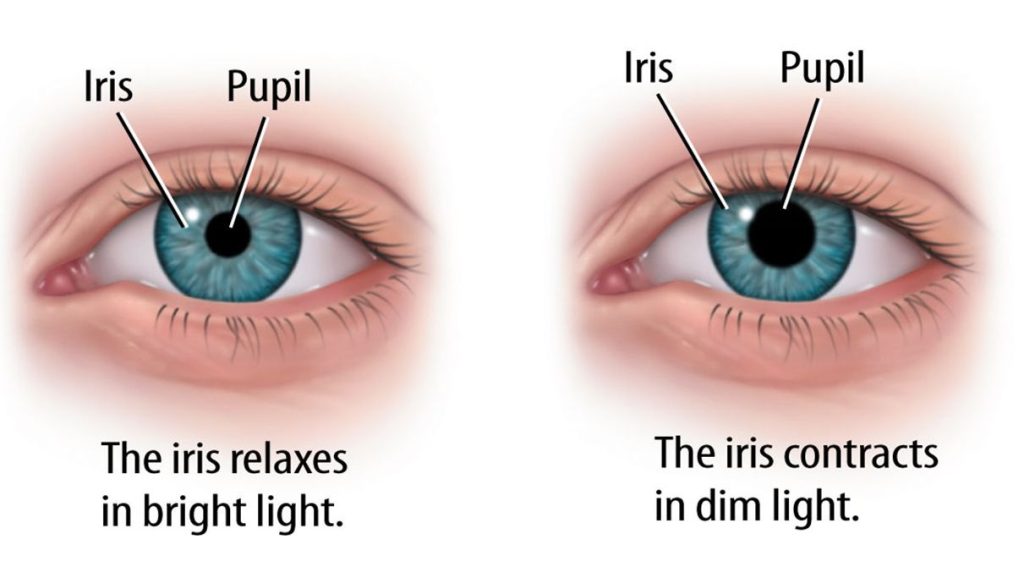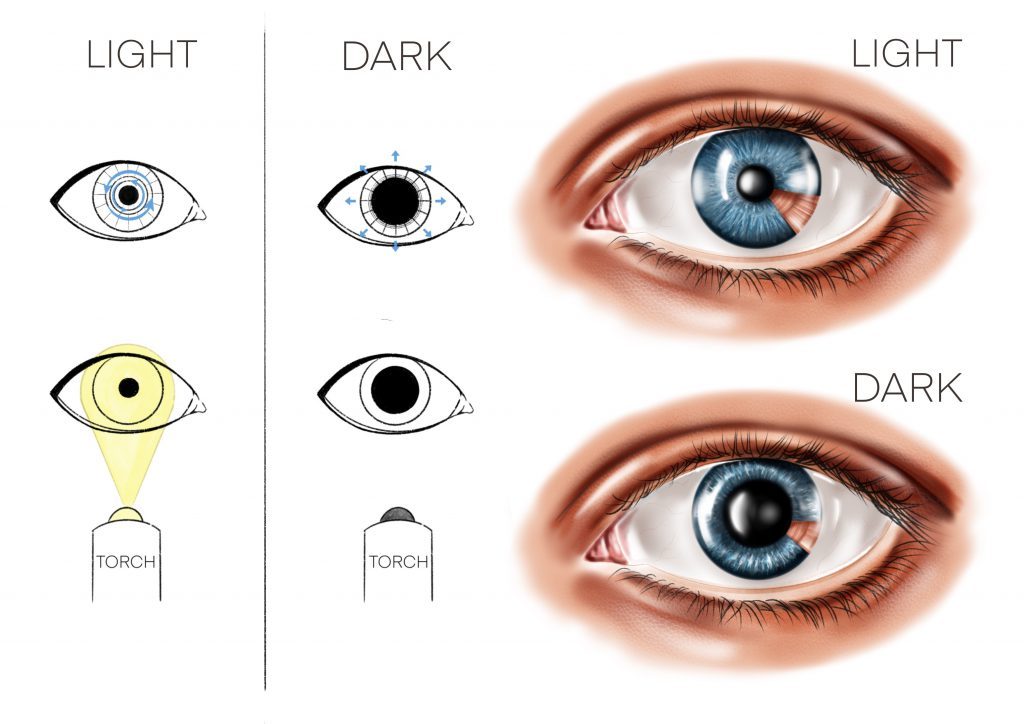
The regulation of light in the eye is accomplished through a combination of physical and chemical processes. The pupil of the eye is responsible for regulating the amount of light entering the eye. The pupil is a small opening in the centre of the iris, and it gets larger (dilates) or smaller (constricts) depending on the level of light it receives. This is controlled by the autonomic nervous system, which adjusts the size of the pupil automatically in response to light levels.
The iris also plays a role in regulating the amount of light entering the eye. The iris is a thin, circular muscle that surrounds the pupil, and it controls the amount of light entering by contracting and expanding the opening size of the pupil.
The lens of the eye also helps to regulate the amount of light. It is a flexible structure that helps to focus light on the retina. The lens adjusts its shape to help focus light in the eye, and it can also change its curvature to help adjust the amount of light entering the eye.
Finally, the retina itself is responsible for regulating the amount of light it receives. The photoreceptors in the retina are sensitive to light, and they can adjust their sensitivity in response to different light

